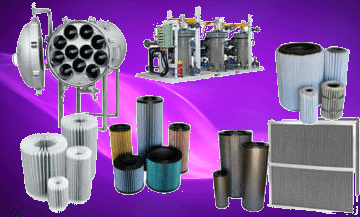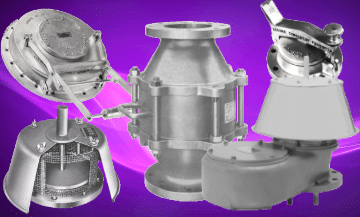A pressure relief valve for emergencies usually operates with a high flow capacity. It is typically used as an emergency relief device to protect tank storage containers, vessels, and other equipment for process engineering. It provides constant protection against excessive pressure and prevents the unintentional loss of product vapor. It is designed to relieve considerable amounts to stop the vessel from rupturing in an emergency. Therefore, the primary purposes of an emergency pressure valve are to provide ease of access to tank inspection and to guard against ruptures that could be costly to the tank.
The valve will start to function when set to the pressure achieved and requires only 10% excess pressure to reach full lift. “Full lift type” technology allows this valve to operate at 10 percent below the maximum work pressure in the tank.
Thanks to the highly developed manufacturing technique, the tank’s pressure is maintained until the pressure is set. This is accomplished by the valve seats constructed of stainless steel, with an O-ring seal inserted into the valve, and the valve pallet is precisely lapped along with an enhanced housing design. The valve will reset and provide a tight seal when pressure is released.
“Full lift type” technology valve uses only 10% overpressure to get to full lift. The emergency pressure valves offer high-quality tightness and, therefore, the lowest loss of product that could reduce the environmental impact. The emergency valves offer the most efficient pressure management system available, along with the reinforced design and secure housing covers in terms of pressure management. These valves can accept high flow capacities and shield against extreme weather conditions and can also be utilized in areas where there are explosion dangers.
A wide range of emergency valves on the market can be used according to the client’s requirements. The Emergency Pressure Relief Valves are installed on tanks that have fixed roofs to contain volatile liquids. They are used as a safety option as well as an ordinary outlet. It works based on raising the load once the pressure change of the reservoir and its surrounding area happens. Once the pressure has been reduced, the pallet returns to its initial position and seals the vent tightly. Emergency Relief Valves ensure the tank’s security from an explosion when there is extreme tension or a tight vacuum. They are constructed of a mixture of components like aluminum and steel, which helps prevent the formation of sparks. The gasket is composed of storage media-resistant rubber. The construction and materials of valves ensure long-lasting, reliable operations that require minimal maintenance.
Numerous sources credit Denis Papin for being the creator of the pressure relief valve (circa 1679) to stop the overpressure of the steam-powered “digester.” The pressure relief valve he invented comprised a weight suspended from an arm. When the force of steam pressure acting on the valve was more significant than the strength of the weight that was acting on the lever arm, the valve was opened. The designs requiring more significant relief pressure needed an extended lever arm or bigger weights. This system was simple. However, there was a need for more space, and the system could easily be altered, leading to potential explosion or overpressure. Another issue was the early closing of the valve when the device was subjected to bounces.
Deadweight-acting pressure relief valves that direct the action Later, to avoid the drawbacks of lever arrangements, directly-acting pressure relief valves for deadweight were used on steam locomotives that were in the beginning. In this model, the weights were positioned directly at the very top of the valve. To keep the weights within a safe limit, the valve was frequently under-sized, which resulted in a smaller vent opening than was needed. Most often, an explosion would occur because steam pressure increased more quickly than the vent could let out excess pressure. Bouncing motions also release pressure.
Direct-acting spring valves Timothy Hackworth is believed to be the first man to employ direct spring valves (circa 1828) on the engine of his locomotive named The Royal George. Timothy employed a configuration of leaf springs which were later replaced by coil springs to force the valve. The force of the spring could be adjusted by adjusting the nuts holding these springs.
The refinements made to the direct-acting spring relief valve were made throughout the years due to the increasing number of steam boilers used for heating and to power riverboats, locomotives, and pumps. Steam boilers are becoming less prevalent in the present. However, this safety valve is still an essential component in systems that include pressure vessels to guard against catastrophic damage or failure.
Every type of valve has distinct needs, but before we dive into selecting a valve, we’ll take a look at the working fundamentals of a typical direct-acting tension relief valve.
Emergency Pressure Valves in Operation
An Emergency Pressure Valve is made up of three essential elements:
- The valve element is typically an open valve with a spring.
- Sensing component, often an element of diaphragm or piston.
- Force element of reference. The most common are springs.
In use, the valve for pressure relief is closed normally until the pressure upstream is at the desired pressure. The valve will break open when the desired pressure is reached and expand, allowing more flow as the pressure overflows. The valve will shut and close when the pressure upstream drops only a few pounds below the set pressure.
1) Valve Element (poppet valve)
Most emergency pressure relief valves use a spring-loaded “poppet” valve as a valve element. The poppet has an elastomeric seal, or in specific high-pressure designs, the thermoplastic seal can be configured to create the seal for the seat of the valve. The valve’s spring and upstream pressure exert forces on the valve when in use. Suppose the pressure from upstream exerts more force than the spring force. The poppet shifts away from the valve’s seat and allows fluid flow into the port for an outlet. When the pressure in the upstream falls below the set point, the valve is then closed.
(2) Sensing Element (piston or diaphragm)
Piston designs are usually employed when higher pressures for relief are required or when durability is an issue, or the relief pressure doesn’t need to be strictly tolerated. Piston designs are generally slower than diaphragm models due to the friction of that piston seal. The diaphragm design is the most preferred for applications with low pressure or where high precision is needed. Diaphragm relief valves are made up of an element in the form of a disc that senses pressure fluctuations. They are typically made of elastomer, and however thin convoluted metal can be utilized in specific applications. Diaphragms are essentially designed to eliminate friction associated with piston designs. Furthermore, with a certain diameter relief valve, it’s usually possible to create an increased area of sensing through a diaphragm design that would not be possible with a piston-style design.
(3) The Reference Force Element (spring)
The element used as a reference force is typically a mechanical spring. The spring acts on the sensing element and can shut the valve. Many pressure relief valves are constructed with an adjustment that allows the user to modify the relief pressure setting point by adjusting the force exerted by the spring that is the reference spring.
Design Parameters
Relief Pressures
Expected pressure for relief is crucial when determining which product is the best for the job.
Flow Requirements
What is the flow rate maximum that the application needs? What is the amount that the flow rate fluctuates? Configuration of the port and efficient orifices are also crucial considerations.
Fluids Use (gas-liquid, gas, and toxic substances, as well as explosive)
The chemical properties of the fluid must be considered before selecting the most suitable materials for your project. Every fluid has distinct characteristics, so it is essential to choose the correct sealing and body material in close contact with the fluid. The components that make up the valve for pressure in close contact with fluids are referred to as “wetted” components. When the liquid is either flammable or dangerous, the valve used for pressure relief must be able to discharge the fluid safely.
Size & Weight
In many high-tech applications, the space available is not as ample, and weight is an issue. Certain manufacturers are specialized in tiny components and must be considered. The selection of the material, specifically the body parts of the relief valve, will affect the weight. Also, be aware of ports (thread) size, the adjustment styles, and mounting options since they will affect the size and weight.
In many high-tech applications, the space available is not as large, and weight is a significant factor. Some manufacturers specialize in small parts and must be considered. The choice of materials, especially the body parts for relief valves, can affect weight. Be aware of the ports (thread) dimensions, the adjustment styles, and mounting options since they will affect the size and weight.
Materials
A broad range of materials is in use to handle various operating conditions and fluids. Emergency pressure relief valves are commonly used components materials are brass, plastic, aluminum, and. Different types of stainless steel (such as 304 or 316) are also available. Springs used to operate the valve for relief are usually composed of metal wire (carbon steel) or stainless steel.
Brass is suitable for most commonly used applications and is generally cost-effective. Aluminum is typically considered in cases where weight is a factor, and plastic is often considered when low cost is the primary consideration or a disposable product is required. Stainless Steels are usually used in conjunction with corrosive fluids when the cleanliness of the fluid is essential or when operating temperatures are high.
It is equally important to consider the durability of the seal material to the fluid and the temperature range of operation. Buna-N is an exemplary seal material. Various seals are available for purchase by various manufacturers, and they comprise Fluorocarbon, EPDM, Silicone, and Perfluoro elastomer.
Temperature
The materials used for the valve’s pressure relief must not just be in good agreement with the fluid being used. Still, additionally, they must also work appropriately at the anticipated operating temperature. The most important thing to consider is whether the elastomer selected will perform adequately throughout the expected temperature range. Furthermore, the operating temperature could impact the flow capacity and the spring rate in the most extreme situations.
WHY CHOOSE PURPLE ENGINEERING?
We're your friends in the field that genuinely care about our clients projects. We work towards establishing relationships with our clients that lasts for decades not days. That's why we always put our clients' satisfaction first.
We have a wide range of products on offer and hold stock on hand of our critical and high-volume items. This means you can find what you need when you need it.
We have a proven track record of success, and our clients are always happy with the final product. And we're always up for a challenge and love a good puzzle. If you're looking for a reliable, experienced supplier who genuinely cares about your project, look no further than Purple Engineering
YOU DIDN'T FIND THE RIGHT PRODUCT?
Purple Engineering is providing a wide range of Pipeline and Oil & Gas equipment. It is possible that we have the product you are after or know who in the market has it! Please call us and we can confirm if we have the item you are searching for.





